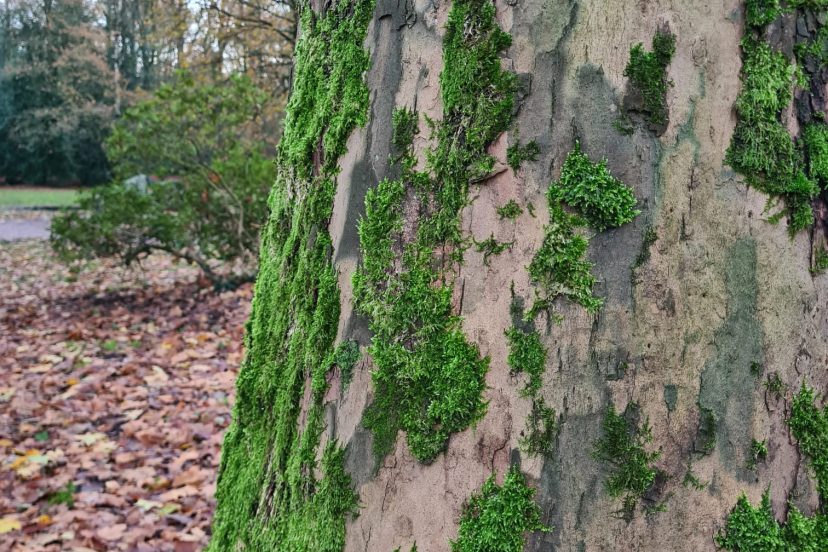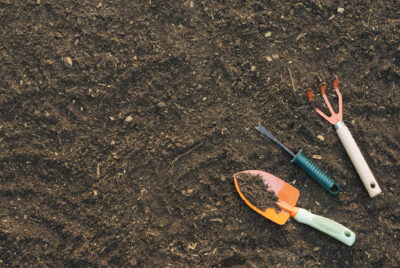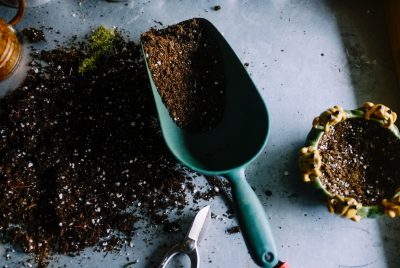What Side of the Tree does Moss Grow on?
If you’ve ever taken a leisurely stroll through a dense, wooded area, you might have noticed the enchanting presence of moss covering the bark of trees. Mosses, those small, green wonders, have a captivating way of turning a simple tree trunk into a lush, fairy-tale-like scene. But have you ever wondered, “What side of the tree does moss grow on?” Let me take you on a journey through the fascinating world of mosses, uncovering the secrets of their preferred abode and sharing some valuable insights.
Understanding Moss Growth
Before we dive into the intricacies of moss growth on trees, let’s unravel the basics. Mosses are small, non-vascular plants that belong to the division Bryophyta in the plant kingdom. Unlike vascular plants that have specialized tissues for transporting water and nutrients, mosses lack these structures. They don’t have true roots, stems, or leaves. Instead, they absorb water and nutrients directly through the structures known as rhizoids.
Here are some key characteristics and features of mosses:
- Structure: Mosses typically have a simple structure with three main parts: the gametophyte, sporophyte, and rhizoids. The gametophyte is the leafy green structure that is commonly seen, while the sporophyte is a small stalk that produces spores.
- Habitat: Mosses are commonly found in damp and shaded environments, such as forests, bogs, and along riverbanks. They thrive in areas with high humidity.
- Reproduction: Mosses reproduce through spores. The sporophyte produces spores that are released into the environment. When conditions are suitable, these spores germinate and grow into new moss plants.
- Absorption of Water: Mosses lack true roots, stems, and leaves. Instead, they have structures called rhizoids, which anchor the plant to the substrate and aid in water absorption.
- Adaptability: Mosses are highly adaptable and can survive in various habitats, from rocks and soil to the bark of trees. Some species can tolerate extreme conditions, such as deserts and Arctic tundra.
- Ecological Role: Mosses play essential roles in ecosystems. They contribute to soil formation, prevent erosion, and provide habitat and food for various organisms. Additionally, they can absorb and retain water, helping to maintain moisture levels in their surroundings.
Moss and Trees
Mosses and trees share a unique relationship. While mosses do not harm the trees, they do benefit from the tree’s structure. Here are some main reasons that highlight the intricate connection between mosses and trees:
- Microclimate Creation:
- Benefit to Trees: Mosses create a microclimate around the tree’s bark. The layer of moss provides insulation, protecting the tree from extreme temperatures and fluctuations in moisture. The presence of moss patches also provide a place for seeds of other plants to land on, i.e., epiphytes, providing water for germination.
- Benefit to Mosses: Trees offer stability and structure for mosses to anchor onto. The bark provides a substrate for moss attachment. The bark structure also collects water and debris, preventing the mosses from drying out.
- Moisture Regulation:
- Benefit to Trees: The moss layer on a tree helps regulate moisture levels. It can absorb and retain water, preventing excessive evaporation from the tree’s surface and maintaining a more stable environment.
- Benefit to Mosses: The tree’s bark serves as a reservoir for moisture, creating a suitable habitat for mosses. This helps mosses thrive in environments with higher humidity levels.
- Shade and Protection:
- Benefit to Trees: Mosses often grow on the shaded side of trees, providing additional protection to the bark from harsh sunlight. This can be particularly important in preventing sun damage.
- Benefit to Mosses: Mosses thrive in shaded environments, benefiting from the tree’s canopy that filters sunlight. The shade also reduces competition from other plants.
Which Side of the Tree is Mossier?
What side of the tree does moss prefer? Contrary to popular belief, mosses don’t play favorites when it comes to the cardinal directions. The growth of moss on a tree depends more on the tree’s specific conditions—light exposure, humidity, and bark texture—than the orientation of the tree. Here are some plausible factors that contribute to moss distribution on trees:
- Light Exposure:
- Mosses thrive in shaded environments. If one side of the tree receives more shade due to the tree’s orientation or the presence of obstacles casting shadows, you may find more moss on that side.
- Humidity Levels:
- Mosses prefer humid conditions. In areas with higher humidity, such as near bodies of water or in dense forests, you may observe more moss covering the tree’s bark.
- Bark Texture of tree species:
- Mosses tend to attach more easily to rough and textured bark. If one side of the tree has bark with more crevices or roughness, it could provide a more suitable substrate for moss attachment. For tree species with peeling bark, you probably will not be able to find too much moss colonizing the tree.
- Microclimate:
- The microclimate around the tree, influenced by its immediate surroundings, plays a significant role. Factors like nearby structures, the presence of other vegetation, and the specific characteristics of the soil can impact moss growth.
- Prevailing Winds:
- Wind can affect the distribution of moss spores. The side of the tree facing prevailing winds might receive more spores, potentially leading to higher moss colonization on that side.
FAQs
- Can I grow moss on any tree in my garden?
- Absolutely! Just ensure the tree has the right conditions—shade, humidity, and textured bark.
- Will moss harm my trees?
- No, mosses are harmless to trees. In fact, they often benefit trees by creating a microclimate.
- How fast do mosses grow on trees?
- The growth rate varies, but under favorable conditions, mosses can establish themselves relatively quickly.
- Can I transplant moss from one tree to another?
- Yes, you can carefully transplant moss from one tree to another, ensuring you recreate the preferred conditions. You can also make a moss slurry and paint it on your preferred tree, wait a few weeks for the moss to grow. Remember to water them and keep it moist during the early growth phase.
- Are there different types of moss that prefer different environments?
- Yes, moss species have varying preferences, so introducing a mix can enhance the visual appeal of your moss-covered landscape.
Embrace the Mossy Magic
In conclusion, the question of which side of the tree moss grows on is more complex than a simple answer can capture. Mosses, in their resilient and adaptable nature, find their way onto trees through a combination of factors. Whether it’s the interplay of light, humidity, or bark texture, mosses teach us about the delicate balance of nature. The next time you find yourself wandering through a forest or gazing at the trees in your backyard, remember that mosses are nature’s artists, painting the landscape with their lush, green hues, and they don’t discriminate when it comes to choosing their canvas.

- turquoises.org
- tinytownnj.com
- sumibol.com
- styogawear.com
- sofrologiaonline.com
- kpukabngawi.online
- sanandaya-prod.org
- promosuzukiignis.com
- pickbestheadsets.com
- paroisse-de-tarascon.com
- oleoleindonesia.com
- mydigitalevo.com
- mejorescafeteras.com
- lythbound.com
- lequilibreduchien.com
- kusonganamocambique.org
- jamonua.com
- getindx.com
- fimcoestate.com
- cndustfilterbag.com
- bios-shield.com
- ambitiouswomenconference.com
- czgunsusastore.com
- nickmarzullomusic.com
- popconverter.com
- janalees.com
- daniello-store.com
- anninhvps.com
- hashtaggadgetz.com
- imageuploading.net
- edureaders.com
- production-matsumoto.com
- palabranueva.org
- jardindetasoeur.org
- journalspotting.com
- acharipickle.com
- mezu-coffee.com
- ionianenvironmentfoundation.org
- techoscience.com
- gushireview.com
- ithinkspanish.com
- writeideas101.com
- artfullposters.com
- barnstable-democrats.com
- maggiemakesitbetter.com
- cyclowing.com
- actual-synergy.com
- lyrikshub.com
- wildwordsfest.com
- fabufluff.com
- nimportnawak.com
- angelisimashop.com
- oriandme.com
- fluerly.com
- sphmnetwork.com
- acte3editions.com
- jaguarresources.com
- geardurr.com
- alsudaisoud.com
- mimarestore.com
- onetisa.com
- ka2kadeh2.com
- aldercarcarehome.com
- mcsstreaming.com
- jcceewatkinsbarney.com
- bilkem.org
- greatlakeslore.com
- infinitelyadaydreamer.com
- moonshine-master.com
- findomwebcams.com
- minecraftserversreview.com
- floridaelitesw.com
- babyluxify.com
- vpatees.com
- sylasshirt.com
- sgvapesghub.com
- learnpaidmedia.com
- theaveragedriver.com
- vikingvise.com
- nansuniqueshop4men.com
- parksideofglenview.com
- congdol.com
- washburnillinois.org
- ryptgym.com
- eliteshopexpress.com
- oliveandbeanboutique.com
- latestpinay.com
- csbakeware.com
- rightbrainedmom.com
- comfortpaintingandremodelingnv.com
- cinematiccaptures.com
- phantommobil.com
- bluemonkeyperformance.com
- ayintaphaber.com
- dreamspaze.com
- hovalot-express.com
- shortlinereview.com
- apparentlyexempt.com
- topazpharma.com
- smartwatchgraph.com
- arrowgamingglasses.com
- marltonbistro.com
- sunumvaaz.com
- printersbin.com
- yvonnegpearson.com
- dragonpicture.net
- miomana.com
- otto-vintage.com
- pacificbling.com
- ermannopitacco.com
- alyamamah-auto.com
- megahaber35.com
- flaminglife.com
- harmonyfarmcandles.com
- patchandcoframes.com
- demarques-et-vous.com
- mybigcamera.net
- foreverbeautycollection.com
- alvaapparel.com
- meghacabs.com
- andonpokayoke.com
- lasnuevastecnologias.com
- MapsLoans.org
- salon-adb.com
- thudhu.com
- series-ss.com
- chigrp.com
- waytoadmissions.com
- stardewitemsids.com
- buddyscustombaits.com
- montajat.net
- natureera.net
- vortexcustomerservice.com
- prohindistatus.com
- spiritualrats.com
- viewgame.net
- upfreshfranchise.com
- randolacaminade.com
- crazy-irrumatio.net
- growing-years.net
- corinneb-arthurimmo.com
- pro-du-code.com
- ajfuryfight.com
- marchempls.com
- toyotabornforthis.com
- nurmuizaspils.com
- latestserialgossip.com
- venesemmorganlaw.com
- juegoskb.com
- babloonstudios.com
- camp-club.net
- collectionheavyduty.com
- lynnmikolajczak.com
- bidouyoga.com
- lifetreeayurveda.com
- graftoutdoors.com
- cars-sell.net
- wartapedia.net
- yarmouktvsat.com
- hidalgoelectrodomesticos.com
- edificiodelicias.com
- dikurat-alsharqia.com
- re-sha.com
- turisindo.com
- callgirlskolkata.net
- top-touch.net
- bloombydesignco.com
- coc-layouts-wiki.com
- sio-nayuta.com
- real-financial-dynamics.com
- moroccotravelway.com
- binmarta.com
- kipinenergy.com
- leovdboogaard.com
- tellmeacharm.com
- hindimesuchna.com
- covabase.com
- savvypalette.com
- auditsocial.org
- bluelagoonlodgehuahine.com
- physickle.com
- outdoorfurnitureindonesia.com
- vereasnegras.com
- yarininegitimizirvesi.com
- hiddenworldgin.com
- kyoto-carappo.net
- cellphonei.com
- mikeforfrederick.com
- hoursinformer.com
- a2theme.com
- miniontees.com
- socialspeaker.net
- katsuragi-hanabi.com
- peanutmutterrescue.org
- bjjinspired.com
- mexampac.org
- idunn-watches.com
- chezanimaux.com
- salvetx.com
- terapiabrevecentradaensoluciones.com
- whenwhereco.com
- wcdoit.com
- kampouridespoina.com
- centrocommerciale-airone.com
- frutasdeeuropa.com
- clearchoiceres.com
- gabinete-psicologico.net
- rugwix.net
- bagmagstore.com
- esoespoliticamenteincorrecto.com
- middlemanagement-tamao.com
- centrocommerciale-brescia.com
- sheilalovesbooks.com
- bibanko6.com
- joguno.com
- allsimbaseball9.com
- youmovise.com
- intojerseys.com
- sathajada-sa.com
- soremoiiyan.com
- county-house.com
- thephotographyfund.com
- nutrialhealth.com
- shenkmachinery.com
- fatburnromania.com
- demonslayeroutlet.com
- xylonwatch.com
- dashimaki-schranz.com
- eazsocialmedia.com
- jessicaleesocial.com
- moscowrentestate.com
- petuko.com
- arteprensa.com
- iklimbekoservisi.com
- iseweurope.com
- mejorestensiometros.com
- drjaqlyn.com
- lpcamozzi.com
- heregoeskate.com
- ortheband.com
- demigarciasabat.com
- flavorcityoils.com
- fabryka-studio.com
- realbarrier-jp.com
- arqueologiadacriacao.org
- tusfinanzasfaciles.com
- maroc-recettes.com
- pinchednerveclinic.com
- sunisout.org
- axelbarrel.com
- danieleangelomartino.org
- todai-mono-lab-japan.com
- m-albaghli.org
- minimodernpaintings.com
- centrocommerciale-lentate.com
- sapphireinvestmentgroup.com
- emsaocarlos.com
- merleandpaz.com
- poweretty.com
- haryanajobportal.com
- cracksofts.net
- tentopdatingsites.com
- movestyles.com
- motostorelocator.com
- bloomingdaleschool.org
- dlja-windows.com
- littletravelprincess.com
- shiningnames.com
- trollslandatoystore.com
- tarrahan-co.com
- mcbaronfootball.com
- organic-suirens.com
- coquitlamcohousing.com
- mothercare-coupon.com
- pestcontrol-alryad.com
- jaredtalavera.com
- fizjorytm.com
- mumzworld-coupon.com
- vitadapappagalli.org
- hnihpainetwork.com
- aziz-anzabi.com
- storewestern.com
- techteacherslog.net
- awaysheetmusic.com
- sergeylutsenkoart.com
- acpel.org
- elazigsatrancakademi.com
- redoxldn.com
- thegang-online.com
- thebigsismovement.com
- medyumdolunay.net
- cachitasnow.com
- voilacreations.com
- copehu.org
- clover-gunma.com
- underseawear.com
- medifooteilat.com
- storozhinets-forest.com
- olaymerkezi.com
- laceyleyla.com
- spsc20knotsnob.com
- horas-espejo.com
- worldlifeadvice.com
- masteringnetworks.com
- gardengild.com
- svwebgrrls.com
- promoddy.com
- citations-ses.net
- shopfreshpasta.com
- aaman-sa.com
- thebestfootballs.com
- cancerprotalk.com
- mayfieldcellphonerepairs.com
- textilesblankas.com
- xcitenow.com
- makanarea.com
- smartmum.org
- jgowdyconsulting.com
- oregontravelingtours.com
- ekimena.com
- thecrayonbug.com
- clouddesktopservice.com
- bitlink-defi.com
- systemgoodcondition.com
- littledittle.com
- tawara-an.com
- windowinstallationmidlandtx.com
- nano-loo.com
- poleaholic.com
- baco-music.com
- toepferlaedchen.com
- radioencuentros.com
- southeastbeautifulkratom.com
- janimakinen.com
- beautyclou.com
- catchycustom.com
- worldwithfalak.com
- deepwellsubmersible.com
- cultishsupply.com
- omegarquitectas.com
- deathlogbook.com
- polymate3d.com
- brucecroskeyrealestate.com
- aui-techno.com
- ozyavuztesisat.com
- festival-cipke.com
- publikasiilmiah.com
- nepaletvous.org
- betasetup.com
- littlethatchflorist.com
- thegovtupdates.com
- thecitadelpub.com
- fisioterapiaalmeria.net
- urdupoetryworld.com
- arbolcomputer.com
- itaprotect.com
- gildong.net
- skimmerspaninigrill.com
- alfananine.com
- modelbouwmati.com
- surgileonline.com
- advancingbioelectronicmedicine.org
- blacklinenews.com
- enterpriseapts.com
- timedistancecalculation.com
- thehaggardhalo.com
- hijosdelsigloxxi.com
- ankaraepoksizemin.net
- clubdeescrituracyrano.com
- benimtesbihim.com
- armstronglawrva.com
- burundukino.net
- marketingmobilsuzuki.com
- ipl-tretmani.com
- dukan-t.com
- gaengkunbl.com
- generalhealthfitness.com
- liesvelvetpolet.com
- mumuonlineshops.com
- glue-note.com
- fukuokakaigi.com
- latelierduloup.com
- yksikhunt.com
- adambarbergroup.com
- ventodokite.com
- educatorhotspot.com
- essaytome.com
- volleyballsinfo.com
- and-camicie.com
- diegodallapalmaoutlet.com
- zvukon.net
- careswayhealth.com
- rd7comunica.com
- httptplinkrepeater.com
- lesdouceursdesbauges.com
- vsekreditnyekarty.com
- astream345.com
- clinikind.com
- audacedesignstudio.com
- urbanflag.org
- ebusinesstalks.com
- kepalabergetarz.net
- bornamelanews24.com
- daiichi-tantei-tochigi.com
- daiichi-tantei-gunma.com
- retetedemamica.com
- petvetfoodtips.com
- poomasafire.com
- stussyhoodies.net
- eileenbell.com
- studyabroadaids.net
- stormfc.net
- betflixpr.com
- graham-grahamlaw.com
- nirakle.com
- timdaily-buy2sell.com
- e-toro-forex.com
- cheapbookingflight.com
- jamalek3almy.net
- mobesekameracanliizle.com
- powertoolspro.net
- eatsumgreens.com
- puppyconnect.org
- keepjudgechrisbrook.com
- ixiartgallery.com
- bagsbrothers.com
- sustaindatacenter.com
- collectiongolfgti.com
- pouceencm.net
- spherequotes.com
- skinhauss.com
- testakw.com
- sia-architecture.com
- onshoesfactoryoutletstore.com
- lojaalohaexpress.com
- ibeldisouk.com
- monellisi.com
- velvetcartstore.com
- ro-zero.com
- sylvieperaud.com
- zaykastar.com
- menardsnz.com
- servimudanzasecuador.com
- earth-v.com
- diendangame.net
- islamioda.net
- kanyewestmerchllc.com
- mobilehomeprotalk.com
- carhartthoodie.net
- farmprotalk.com
- monocolar.com
- ksvhelmstedt.com
- maboxensorcelee.com
- popninja.net
- machinistsfriend.com
- amalalfoam.com
- timearamesh.com
- sekizdizayn.com
- retunesthe.com
- tiendakrona.com
- riha-axis.com
- brownfieldsports.net
- childmall-egy.com
- blossomingpress.com
- windowtintingtoday.com
- darkriser.com
- kabmart.com
- terarose.com
- wrapallaboutitanddyehappy.com
- trendvonal.com
- positivityloop.com
- thelgservicecenter.com
- vipistanbulturizm.com
- motormaniax.com
- dailyjonomot.com
- 724bileklik.com
- white-parts.de
- xpertcheck.de
- tastatur-mit-touchpad.de
- st-michaelsbund-regensburg.de
- wmekip.com
- wingsnbags.com
- vulkanlux.com
- uman-map.com
- tonemasseve.com
- denledphuchai.com
- tilleul-festival.com
- thestarswesaw.com
- thehomewind.com
- thebougecruise.com
- thebeirutforum.com
- tellthebelllsurvey.org
- teecina.com
- taiacore.com
- springroove2021.com
- spheretactics.com
- smartfixghana.com
- rotwandeins.de
- ladygagachromaticaballmerch.de
- jaegerhof-essen.de
- shiawaseseisakujo.com
- sbanglanews.com
- rospages.org
- proxytoolsbox.com
- provitalcosmetics.com
- pixmaweb.com
- pinkninjakitty.com
- pennyscustomgifts.com
- nripja.com
- newlyricsmedia.com
- namiceofficial.com
- nairaolshop.net
- muzicsome.com
- momscounsel.com
- miso88vn.com
- materialsscienceforum.com
- magicmushroomstore.net
- lsprrun.com
- legado-shop.com
- komachimama.com
- klasspor.tv
- jpcaat.com
- jeong-good.com
- irobowifilogin.com
- investirglobal.com
- hindi2news.in
- frerichsundcordes.de
- hopoteez.com
- hmnews.net
- herbs4usa.com
- goguideonline.com
- georgiaphelpsbeautyblog.com
- ganave24.com
- funcity33mys.com
- funcity33myr.com
- eventswithphotobooth.com
- englishsun.org
- emeraldkalama.com
- egyptiandrugindex.com
- drmohamedelkaseer.com
- diosloscria.org
- divardecor.com
- dichvukekhaithue247.com
- dallasmavericksclub.com
- crossfitworkovertime.com
- course-experience.com
- compagnieduchaos.com
- cleverminu.com
- christianfaithstore.com
- chungkhoanviet.net
- celebrity-osaka.com
- caribefm.com
- burzi-obiavi.com
- buckfastleigh.org
- b-faast.com
- bebidasycopas.com
- ashleytuckerdesigns.com
- armoredtalk.com
- amalmp.com
- alphapsilocybins.com
- abtehnic.com
- aajtakgujarat.com
- gadgetsreviews.in
- tabrizmusic.net
- wahjalhafl.com
- theblaemblaem.com
- phamquocdat.net
- noticiasyprogramas.com
- saralchemical.com
- vanithasmakeover.com
- shrimaangroups.com
- maydiengiaichat.com
- bookbaopr.com
- jubileegastronomy.com
- 7migliori.net
- florinda-eg.com
- turtlespet.com
- ashtarmag.com
- todaygkallexams.com
- atasehircicekonline.com
- tipsyconsejos.com
- pabriksepatubogor.com
- lightreadingsmag.com
- baldwinhillsclassroom.org
- 3mdcrossfit.com
- olamio.com
- ashroyfoundation.org
- cobargocommunitytreeproject.org
- yugiyahirano.com
- golshidgroup.com
- puppieslisting.com
- galeriaandrychow.com
- regina4pueblo.com
- swindonlightningcheerleading.com
- hoyafederal.org
- valleyautofm.com
- olivessentials.com
- ebooks-land.net
- alinabears.com
- fredebami.com
- 3b-international.com
- needaccountinghomeworkhelp.com
- yourribbonstore.com
- redhombresigualdadgranada.org
- youthreferencehub.com
- nikhandymanwolverhampton.com
- tiendamizunocolombia.com
- ussclamagore.org
- nbfest.com
- gocoastalrowing.com
- judgechrisdillon.com
- tsutawaru-saiyo-animation.com
- sanatuser.com
- daimielenconcierto.com
- puertascorrederasde.com
- casaesferica.net
- hashtagmasr.net
- glameursappeal.com
- heriadrov.com
- facinfissi.com
- sanctuarydowntownseattle.com
- a-tom.net
- naynaeshop.com
- publikmusic.com
- wielerkledingsnl.com
- happydadseltzerstore.com
- marijuana4eu.com
- hyronline.com
- aficionadosalafotografia.com
- green-barn.com
- kitschisland.com
- parwanibuildcon.com
- asejustplay.com
- aapbhijaano.com
- creatiefmedia.com
- ohcrocs.com
- tarrynsimone.com
- kwotimation.com
- rental-sim.com
- kadenkagu.com
- leahmariaclothingandco.com
- formatosdeplantillas.com
- selfcareluxe.com
- toyota-padang.com
- extraversions.com
- residenciasmoncasol.com
- massage-domicile.com
- chaparrashop.com
- fixerscoffee.com
- zeinnas.com
- detal-ka.com
- rtwiseowls.com
- crumpetsteaandsewing.com
- elhadatheco.com
- hydrofitnessgym.com
- kilisyoreselurunler.com
- istanbulotogarrentacar.com
- ekastationery.com
- redrama.org
- thelocalgraincompany.com
- yuyi4you.com
- raluland.com
- triachichi.com
- fuegoatierra.com
- artimarzialiga.com
- thepetspace.net
- congresoeducacionunir.net
- tkpsdasultengprov.com
- amp-1tiara4d.xyz
- lebah4d-amp.com
- tiara4d-amp.com
- edwinslot-amp.com
- laris4d-amp.com
- lebah4d-alternatif.com
- laris4d-alternatif.com
- tiara4d-alternatif.com
- edwinslot-alternatif.com
- edwin-slot-gacor.shop
- edwin-slot-gacor.site
- edwin-slot-gacor.store
- tiara4d-alternatif.shop
- amp-tiara4d.shop
- amp-tiara4d.xyz
- laris4d-slot-gacor.online
- laris4d-slot-gacor.shop
- lebah4d-slot-gacor.online
- amp-lebah4d.shop
- amp-lebah4d.site
- tiara4d-xyz.shop
- corlaslot-xyz.site
- corlaslot-gacor.site
- corlaslot-amp.xyz
- champion4d-amp.xyz
- tiara4d-gacor.xyz
- pastigacordilebah.xyz
- scatterhitam-lebah4d.com
- lebah4d-slottoto.com
- lebah4dtogel.com
- lebahamp.com
- ampforlebah4d.com
- jagonyalebah.xyz
- selalumenangditiara4d.xyz
- lebah4dsitusslotterbaik.xyz
- lebah4d-slot4dterbaik.xyz
- lebah4dslot4d.com
- tiara4dgacor.com
- lebah4dgacornih.com
- lebahnihboss.xyz
- laris4damp.xyz
- slottiara4d.com
- tiaragacor.xyz
- tiaraslot4d.xyz
- edwinslot4d.xyz
- slottiara4donline.xyz
- lebahslotmaxwin.xyz
- lebah4donline.xyz
- lebahslot20k.com
- lebah4dslotviralhariini.xyz
- edwinslot-amp.xyz
- amp4dslotlebah.com
- prediksihklebah.xyz
- slotdana10k-amp.xyz
- slottiara4d.xyz
- ampforlebah4d.xyz
- depocuman10k.xyz
- tiara4d-slot.xyz
- slotserverasialebah.xyz
- slotthailandpro.xyz
- situsbanyakmenangtiara4d.com
- slotqristiara.com
- amplebah4d.xyz
- slotserverasia.xyz
- slotterpercayatiara4d.com
- slotdemopragmatic.xyz
- slotlebah4d.xyz
- slotsbobettiara4d.xyz
- ampmaxwinedwinslot.xyz
- bandartototiara.xyz
- maindisituslebah.com
- daftarsegeradilebah4d.com
- menangdikaya.xyz
- selalumaxwindilebah.com
- selalujpdikaya.xyz




